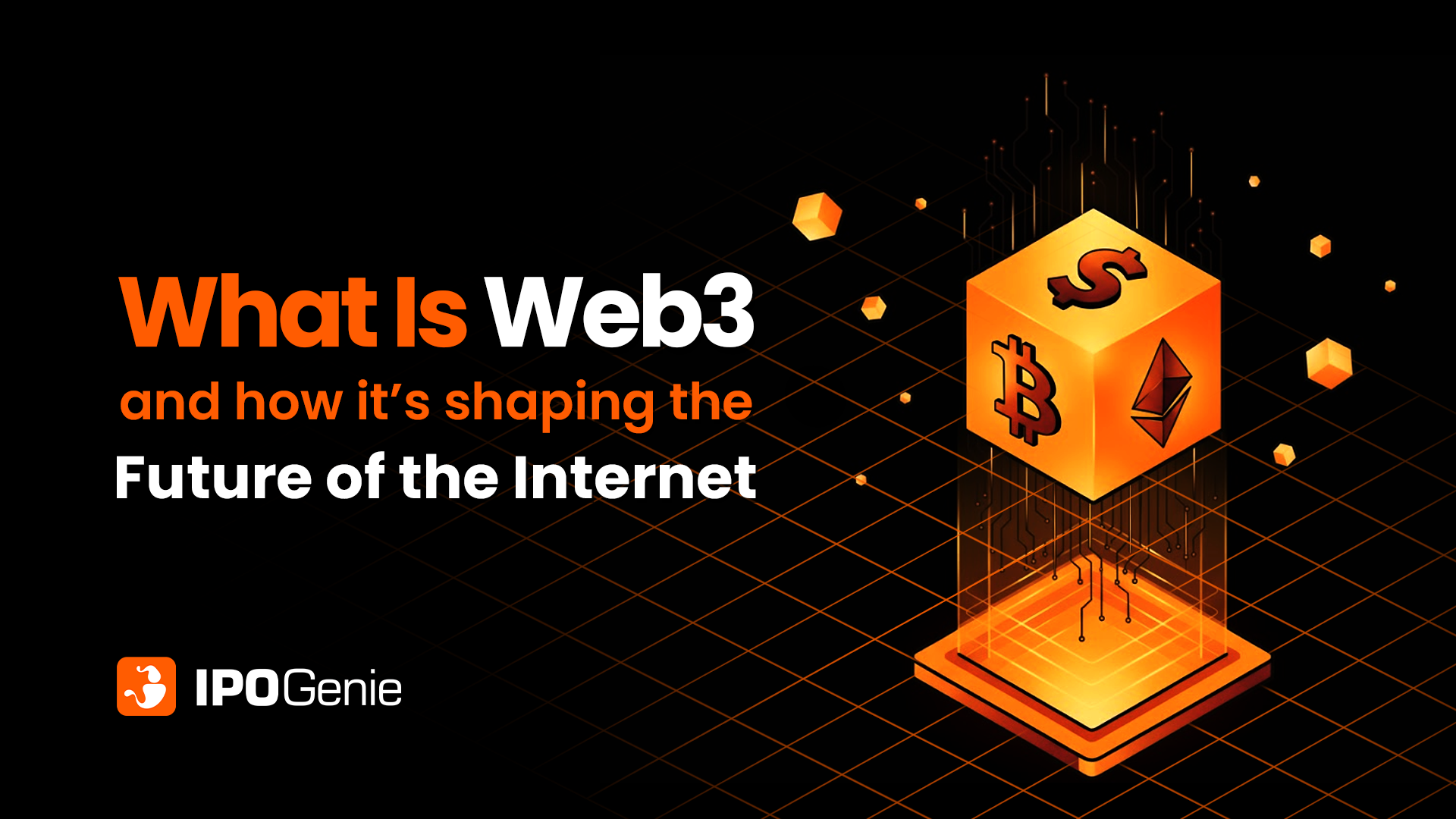The internet is evolving again, and this time, the change is bigger than ever.
After Web1 gave us simple websites and Web2 brought social media and apps, we’re now entering the era of Web3, a new internet built on blockchain technology.
Here’s why this matters: Web3 gives users real ownership of their data, digital assets, and online identity. It’s the foundation of a decentralized internet, one that shifts control from tech giants to the people who use it.
Whether you’re a crypto enthusiast, investor, or just exploring new tech, understanding Web3 meaning and how it’s reshaping industries will help you see where the future of the internet is heading.
What Is Web3?
At its core, Web3 (short for “Web 3.0”) represents the decentralized internet, an ecosystem where users own their data, control their digital identity, and transact without centralized intermediaries.
In Web2 (today’s internet), tech giants like Google, Meta, and Amazon dominate. They store your data, control access, and monetize your online activity. Web3 flips this model. Built on blockchain technology, it enables peer-to-peer interactions, tokenized assets, and trustless transactions, meaning no single company or entity has total control.
That’s the core Web3 meaning: freedom, transparency, and ownership.
How Web3 Works?
At the heart of Web3 is blockchain technology. A blockchain is a secure, transparent digital ledger that records every transaction or interaction. This system removes the need for middlemen and makes online actions verifiable.
Blockchain Web3 applications include decentralized finance (DeFi), NFTs, DAOs, and decentralized social platforms. Each one gives users control over assets, identity, and interactions online.
Web3 vs Web2 - The Big Shift in Power
To understand how transformative Web3 is, let’s compare Web3 vs Web2:
In simple terms, Web2 was read–write, while Web3 was read–write–own. Blockchain Web3 applications power these ownership layers, reshaping industries from finance to art to gaming.
How Web3 Changed the Internet?
Blockchain is the backbone of Web3. It acts as a transparent, immutable ledger where every transaction, asset, or identity can be verified without relying on a centralized authority.
Here’s how blockchain empowers the decentralized internet:
- Transparency: Every action is recorded on-chain, visible to all.
- Security: Data is encrypted and distributed, reducing hacks and data breaches.
- Trustless Systems: Smart contracts automate agreements without intermediaries.
- Ownership: Users hold assets (like tokens, NFTs, or data) in their own wallets.
From decentralized finance (DeFi) to decentralized social networks and digital identity systems, blockchain Web3 applications are redefining how the internet works, and who controls it.
In simple words, this shift could redefine how people connect, trade, and create value online.
Real-World Use Cases of Web3
Web3 isn’t just an idea; it’s already transforming industries across the globe.
- Finance (DeFi and the Decentralized Internet):
In Web3, DeFi platforms let people lend, borrow, or earn interest without banks. Smart contracts handle every step transparently, making finance more open and efficient.
- Gaming (Web3 in Virtual Worlds):
Play-to-earn games give players ownership of digital assets like land, skins, or weapons. These assets can be traded freely, turning gaming into a new digital economy.
- Art & Media (NFTs and Creator Empowerment):
Artists can now sell their work directly to fans as NFTs. They keep control of royalties, ownership, and distribution; no record label or gallery needed.
- Social Media (Web3 vs Web2 Platforms):
Unlike Web2 platforms, where companies control content, Web3 networks let users truly own their posts and followers. Your identity stays with you, not with the platform.
- Startups & Investing (Blockchain Web3 Applications):
Platforms like IPO Genie are pioneering tokenized startup equity, opening private market opportunities to everyday investors, once limited to institutions.
These real-world examples show how Web3 technology is building a more inclusive, transparent, and user-owned internet economy.
Why Web3 Matters for Investors
For investors and forward-thinking institutions, Web3 represents a structural shift, not just another tech cycle.
Just as the early Web2 era gave rise to trillion-dollar giants like Amazon and Facebook, the Web3 wave could define the next generation of market leaders.
Projects that integrate AI, tokenized assets, and real-world blockchain Web3 applications, like IPO Genie ($IPO), are positioning themselves at the heart of this transformation.
Challenges and the Road Ahead
Web3 is still early. Issues like scalability, regulation, and user experience remain hurdles. But innovation is accelerating fast, especially as AI and blockchain converge to build more intelligent, decentralized systems.
The question is no longer if Web3 will shape the future, but how fast it will happen.







.png)

.png)
